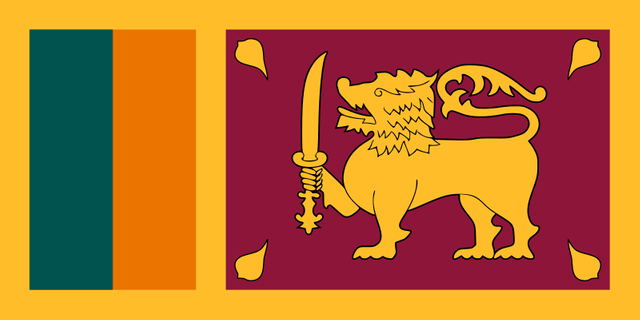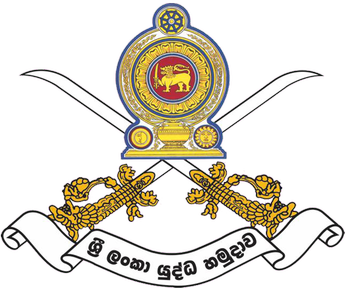
Sri Lanka is a small country surrounded by the Indian Ocean. The island nation, known to the world as the Tears of the Indian Ocean, is a land of natural beauty. Freed from British colonial rule in 1947, the country changed its name from Ceylon to Sri Lanka. Lots of foreign tourists visit the country every year to enjoy its beauty. In addition to its natural beauty, the people of this South Asian country are carrying the memory of a long bloody civil war.

To find out the cause of Sri Lanka's civil war, one has to look back. The British ruled Ceylon and Sri Lanka from 1815 to 1947. British-ruled Sri Lanka was socially dominated by the Sinhalese from the beginning. It is generally believed that Sinhalese speakers came to Sri Lanka from India around 500 BC and have been in the majority in the country ever since. On the other hand, the Tamil-speaking people are known to have come to the country much later, in the seventh to eleventh centuries AD.
As of 1815, the total population of Ceylon at that time was three million Buddhist Sinhalese and only three million Hindus Tamil. But after the arrival of the British, when a wide variety of farming was introduced in Sri Lanka, the British officials brought about one million Tamil-speaking people from India to be engaged in farming.
Gradually, Tamil-majority settlements developed in the northern part of the country. The school was established for the Tamil speaking people with the help of the English. And an educated class was formed among the Tamils. British officials have been deliberately over-recruiting Tamils in various bureaucratic positions. This caused dissatisfaction among the majority Sinhalese people. The old game of dividing the British rulers began.
In 1947, the British government declared the independence of Ceylon and Sri Lanka. Immediately after independence, the Sri Lankan government began to pass discriminatory laws, curtailing the rights of the Tamil minority. The situation of Indian Tamils, especially those brought by the British, became worse.
In 1956, the government declared Sinhala as the only official language of the country, making it difficult for Tamils to get government jobs.
Meanwhile, the Ceylon Citizenship Act of 1948 de-stateized about seven lakh Indian Tamils. Most of them came from India for farming on the island during the British rule. The sudden loss of citizenship sparked outrage against the country's government and the majority of the population. And so the seeds of a long civil war began to germinate in the minds of the Tamil people.
In 1956 a massive riot broke out there. So that the Sinhalese and Tamil speaking people resort to violence against each other. As a result, thousands of Tamil-speaking people were forced to migrate to the Tamil-majority north of the country. Velupillai Prabhakaran appeared on the stage in 1982. Who later became the sole leader of the Sri Lankan Tamils. And he became the only commander for the Tamils in the long civil war.
Prabhakaran organized the students of the university in 1962 and formed a student movement called 'New Tamil Movement'. The movement was started to demand equal rights for Tamil students in the grading system and to give more Tamil students a chance in higher education. In 1975, the mayor of Jaffna was assassinated at their hands, further fueling the ongoing violence.
Prabhakaran formed The Liberation Tigers of Tamil Eelam (LTTE) in 1986. Because the Tamil New Movement formed by Prabhakaran earlier joined another Tamil movement.
In the 198 national elections, the Tamil United Liberation Front, a coalition of a few smaller political parties in the Tamil-dominated areas, won most of the seats. But the Sri Lankan government did not allow them to participate in parliament. Because of the allegations against them, they are for the Tamils to be independent of Sri Lanka and to form a separate country.
Tamils were the victims of another riot when they were accused of beating a Sinhalese police constable. Intense violence spread again.
In 1963, the ongoing ethnic violence and chaos in the country officially started the civil war, the first Ilam war began. An LTTE attack that year killed 13 Sinhalese army members and sparked anti-Tamil riots across the country, including in the capital Colombo. As a result, Tamils across the country became victims of violence and thousands of Tamils were killed. The Tamil people were forced to move from the Sinhalese-inhabited areas.
Dialogue between the Sri Lankan government and the Tamil Tigers was held in 1965 as part of the peace process, but failed. In 1986, the Sri Lankan army pushed the Tamil Tigers towards the northern city of Jaffna.
The then Prime Minister of India Rajiv Gandhi decided that India would intervene directly to control the situation. And in the same year, the governments of Sri Lanka and India reached a peace agreement. Under the agreement, the Sri Lankan government, mediated by the Indian government, made arrangements to ensure many facilities for the Tamil rebels. Moreover, Tamil is one of the official languages of the country. According to the agreement, the Indian army was engaged in establishing peace in the north and east of the country.
Violence escalated on both sides in 1967, and international and internal pressures forced the Indian Army to withdraw its mission to Sri Lanka. The Indian Army's peacekeeping mission was officially declared closed.
The level of violence escalated after the withdrawal of Indian troops. The Tamil Tigers named this fight the Second Ilam War. On June 11, 1990, the Tamil Tigers shot and killed about six to seven hundred Sri Lankan policemen one by one. A week later, the then defense minister declared war on the Tigers.
Meanwhile, Rajiv Gandhi, who had gone to Tamil Nadu to campaign for the Indian national elections in 1991, was killed in a suicide bombing by LTTE members. LTTE chief Velupillai Prabhakaran had the idea that if Rajiv Gandhi won the election, he would send the Indian Army back to Sri Lanka. In 1993, then-Sri Lankan President Ranasinghe Premadasa was similarly assassinated by LTTE members.
In 1994, newly elected President Chandrika Kumaratunga resumed peace talks with the Tamil Tigers. The dialogue failed, and the government cracked down on the insurgency. The government called the war a "war for peace" and for the Tigers it was the third Ilam war. In 1995-96, the Sri Lankan army conducted a full-scale operation in the north to quell the insurgency. A massive operation to drive the rebels out of the city of Jaffna has displaced about 600,000 Tamils.
In 2000, Norwegian-mediated peace talks resumed. In 2001, Ranil Wickremesinghe was elected Prime Minister. He was in favor of resolving the issue on the basis of peaceful dialogue with the Tamils. When the talks began, for the first time in decades, there was some peace in Sri Lanka. In Norway, in 2002, the two sides reached a power-sharing agreement. Under this, the Tamil Autonomous Region was established in the northern and western parts of the country.
A ceasefire agreement was also signed between the two sides. But in 2003, the peace talks broke down again. Procession of displaced people in 2009 © Trokilinochchi - Flickr The highest level of violence since the ceasefire was signed in August 2005 was in August 2005. Fighting between the army and the Tamil Tigers has killed hundreds of people and displaced thousands more.
Finally, on 16 May 2009, the Sri Lankan government declared victory. The next day, a website run by the Tamil Tigers said, "We have reached the bitter end of this war." The long 27 years of violence came to an end. Sri Lankans around the world breathe a sigh of relief. Ending the longest civil war in Asia in decades.